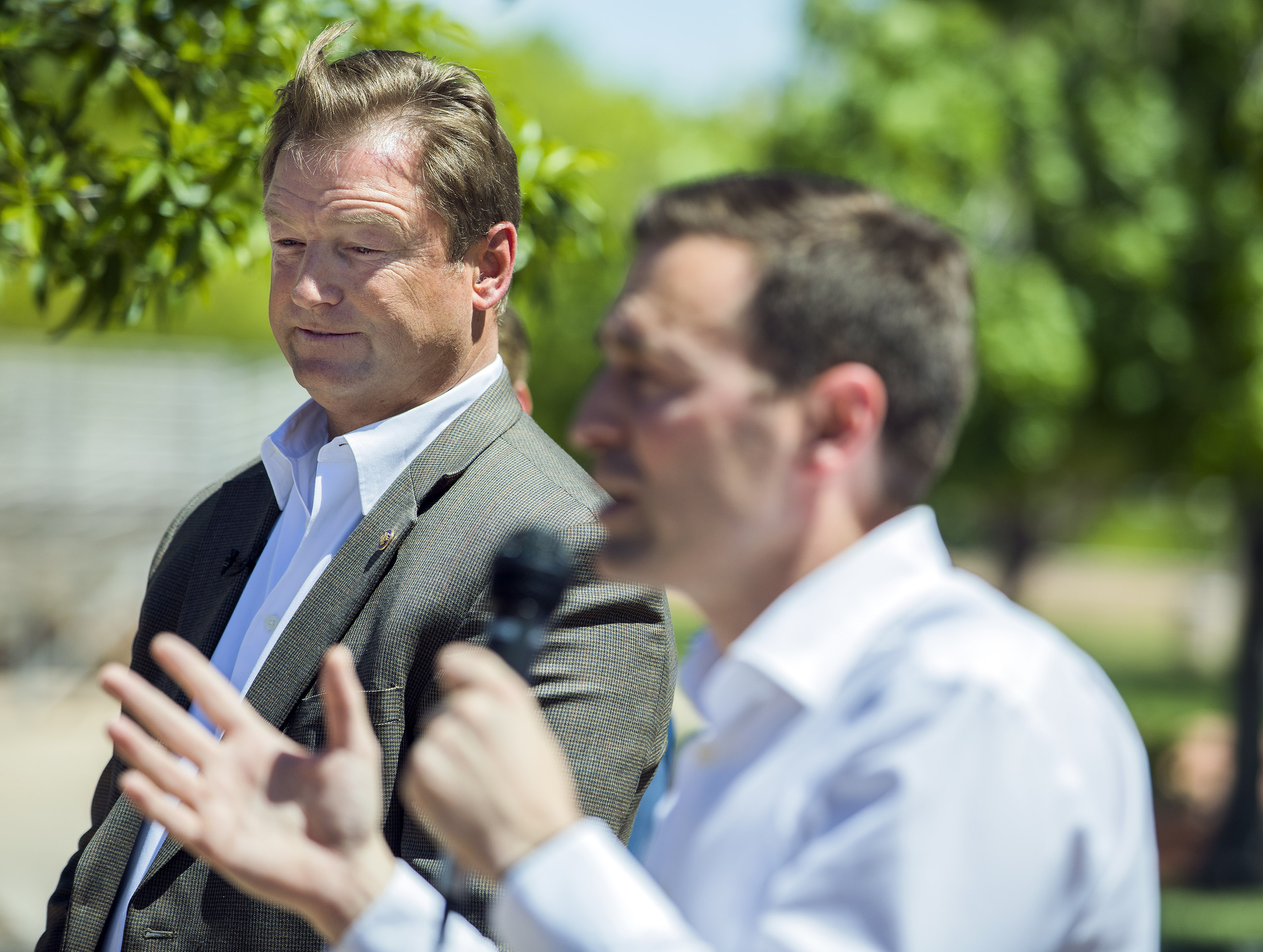Poll shows opportunities, perils for candidates in major races

The election is 14 weeks from today, and the Reno Gazette-Journal has helpfully published a poll with results that are not that surprising on the toplines but contain golden information nuggets to be excavated underneath the headlines.
Yes, the Senate and gubernatorial races remain close, despite a lot of TV and digital advertising already. (I’ll get to that in a bit.) The Question 3 aka Energy Choice Initiative upside-down numbers, already being protested by the wailing proponents, are really not that surprising – the foes have been much more active so far in the media, free and paid.
The poll questions are here and the crosstabs are here.
Here’s my deep dive into those results and some others:
---The poll’s credibility: Suffolk University, which conducted the poll of 500 likely voters from July 25-29 (MOE=4.4 percent), is a quality outfit. I’ve worked with them before, and 538 rates them a B-plus.
Let’s look at the internals:
The Democratic-Republican voter breakdown is 38-35, which is about 2 percentage points favoring the GOP. But that makes sense because Republicans probably will turn out in greater numbers, as they usually do, although this midterm may be an anomaly.
The regional breakdown is 65 percent Clark, 20 percent Washoe and 15 percent rural, which is pretty standard. The more the Dems push up the Clark number, the better they will do; and the Republicans’ plan is to drive up the rural percentage to as close to a fifth as they can, which likely would change outcomes.
The female-male breakdown is 51-49, which would seem to give the GOP a slight advantage. If that gap grows, considering the gender differentials you will see below, that’s big trouble for Dean Heller and Adam Laxalt. If it is close to 50-50, as this sample is, the Republicans have a much better chance.
The sample has 18 percent Hispanic voters, which may be optimistic for a midterm. But it is certainly possible in this one.
Bottom line: The Suffolk team knows what it is doing, but there are variables that could dramatically affect these results. Also: Snapshot in time, only poll that matters is Election Day and other clichés you may like….
--- U.S. Senate: The race could hardly be closer. It’s not just 41-40, Heller; it’s a difference of five (!) voters.
Jacky Rosen is better known than when we did our poll, but 16 percent still say they have never heard of her and 22 percent say they are undecided as to how they feel about her. This is why the race is so close. Period. Heller’s numbers are underwater – 39-42 – which would ordinarily mean he was dead. But if he can define Rosen…. See Reid-Angle, 2010. (Yes, I know Rosen is no Angle, and Heller’s grasping attempts to attack her so far have been laughable, but the principle applies.)
Important: Among those who know them both, Rosen leads by 7 percentage points. That number has to worry Heller and shows why he needs to define her.
There is a huge gender gap: Less than a third of women support Heller and the same is true of men and Rosen.
Rosen’s weakness can be seen in Clark, where she is only up 43-38. Yes, MOE’s among subgroups are much higher, but she needs to win Clark by twice that, I’d guess. (Washoe and rural samples too small to interpret a lot.)
Rosen and Heller are holding their bases about the same (good news for the incumbent), and indies slightly favor Rosen. That latter cohort could be the key to the race. If Heller keeps it close among non-major party voters, he could eke it out.
The issues of interest don’t seem to favor one candidate, although health care being barely at the top probably helps Rosen. The fact that Donald Trump is the most important issue to almost a fifth of voters is the classic double-edged sword and shows why Heller has tethered himself to the president and how important the POTUS numbers are to this election, especially among indies. (Trump is at 46 percent approval-49 percent disapproval, which ain’t good but I’ve seen worse.)
Nineteen percent chose “none of the above,” a minor candidate or said they were undecided. That cannot hold, but the more Heller can push into one of those categories – see his 2012 win – the better shot he has.
Bottom line: The race should remain close, and this is one of those contests where one of the oldest political aphorisms will be apt: Campaigns matter.
--- Governor: It could hardly be tighter – 208 respondents favored Adam Laxalt and 205 favored Steve Sisolak.
The gender gap is huge – Laxalt leads Steve Sisolak 49-34 among men and trails 48-35 among women.
Sisolak, like Rosen, only leads by 5 percentage points in Clark County, which is not a good portent. They are tied in Washoe and Laxalt leads by 22 in the rurals, but the samples are very small. Laxalt has room to grow in the rurals, though – he’s only at 53 percent.
Sisolak has 85 percent of his base and Laxalt has 81 percent of his. It’s a small sample, but Laxalt leads by 12 (37-25) among indies, which is something to watch.
Sisolak (36-35) has been hurt by all the negative ads, and nearly a third still won’t express an opinion. Laxalt (37-27) is better, but a quarter didn’t take a stand on him.
Ryan Bundy took 2.5 percent, which may be significant if he holds that or increases it. But which seems more likely?
Of issues deemed important, economy and education are at the top followed by health care. Not sure that matters much, but you can see why Laxalt is running ads as an education leader. The Dems will push health care here and in the Senate race.
Bottom line: The good news for Sisolak is he hasn’t done much paid media against Laxalt yet and is still even despite all the “Shady Steve” stuff. The good news for Laxalt is that relatively low number in the rurals and Sisolak’s high negative number. The Sands of time could still determine this outcome.
(One wild card: The poll shows, by 68-22, that Nevadans want the next governor to enforce background checks. That helps explain why Laxalt, who campaigned against the ballot question and wrote an opinion the governor relied on to not enforce the successful initiative, is now asking for federal funds to help on this score. Keep an eye on the gun issue in the state where 1 October happened – it may be different this cycle. May be.)
--- Question 3: After winning easily in 2016, it is losing badly now – 46-31. NV Energy and its allies have done a spectacular job in gaining/cajoling/wooing allies and have dominated the paid media so far. But remember, it’s still 80 days until early voting and this could Switch at any time.
The numbers, though, are consistent across demographic groups. I doubt any of it is solid, but that is significant.
And I find all of today’s complaining on social media and in a news release by proponents to be not only sad but unproductive. The question in the poll correctly distilled the proposition as "minimize regulations on the energy market and eliminate legal energy monopolies.”
Perhaps those pushing the question might want to start, you know, running a campaign. (I still find it hard to believe it will fail, but….)
--- Brothels: Outlawing is losing 61-29. Sixty-seven percent of men and 56 percent of women. Fifty-five percent in Clark and more than 70 percent in the rest of the state. Sixty-two percent of Democrats and 56 percent of Republicans.
Seems like a Hof-baked idea at this point.
--- Miscellany: There’s other interesting stuff in the poll, too. Nevadans are getting more optimistic, and Gov. Brian Sandoval remains quite popular. Maybe there’s a connection there – Sunny begets sunny outlooks?
Disclosure: Switch, NV Energy and Steve Sisolak are all donors to The Indy. See all of our donors here.
